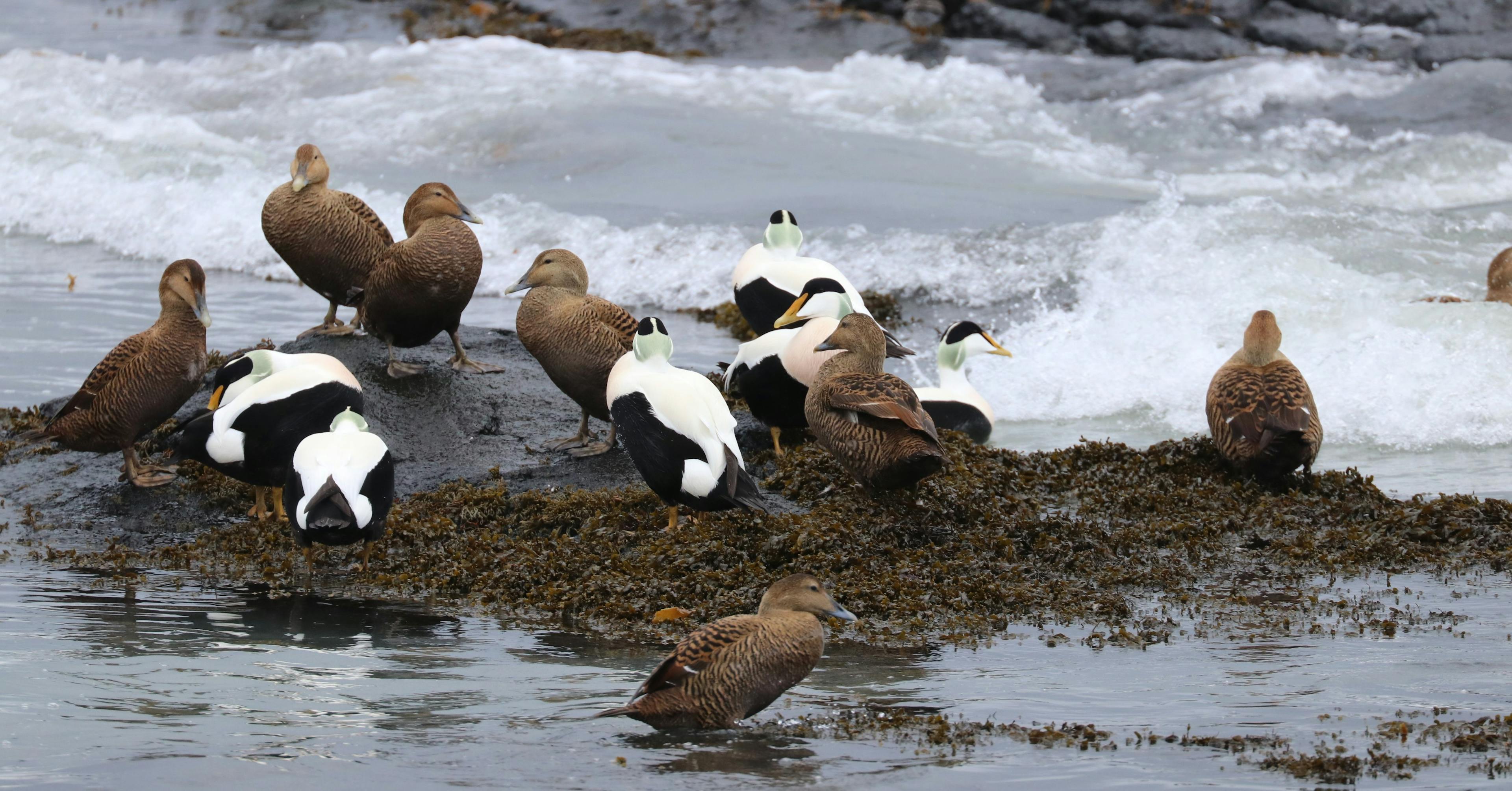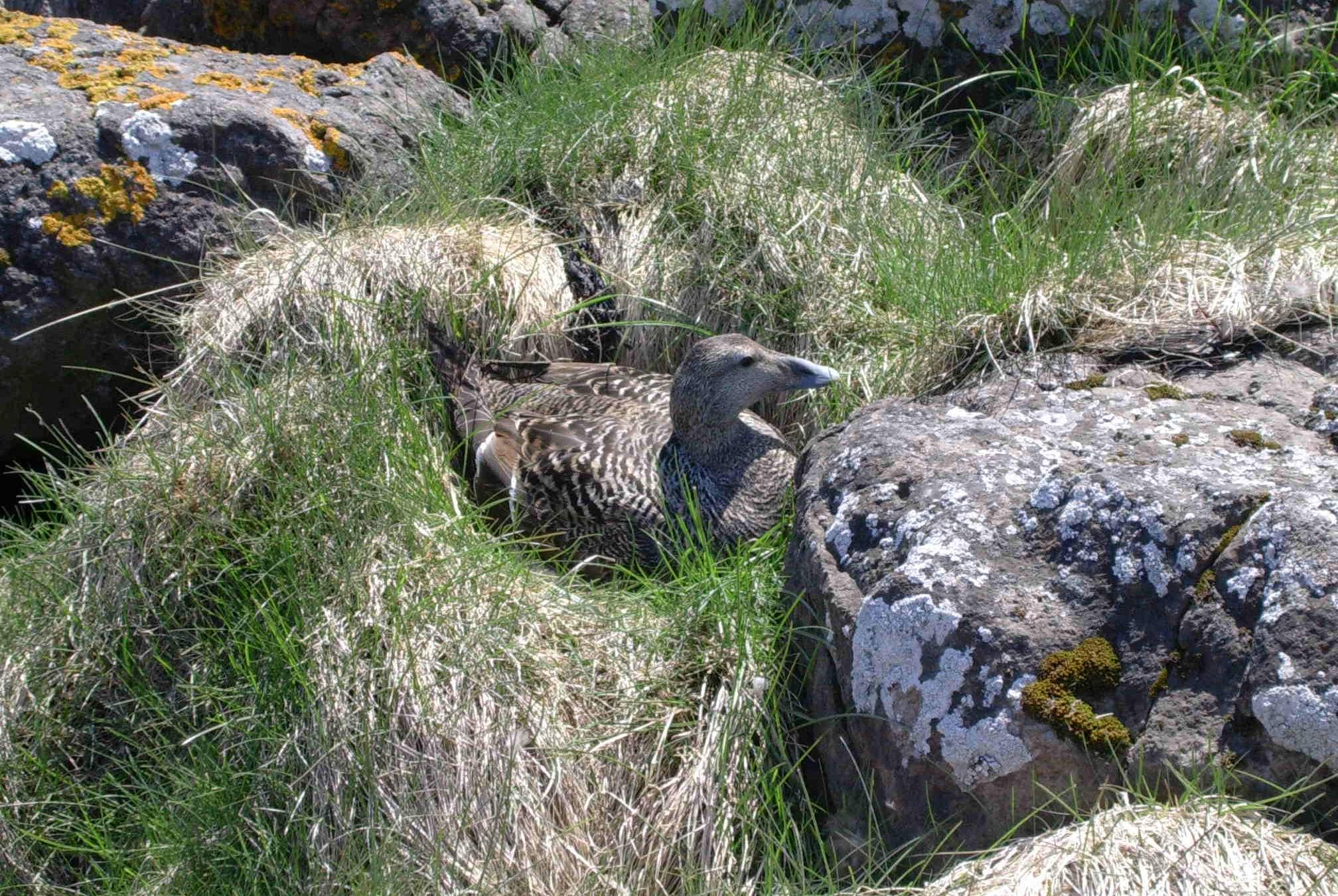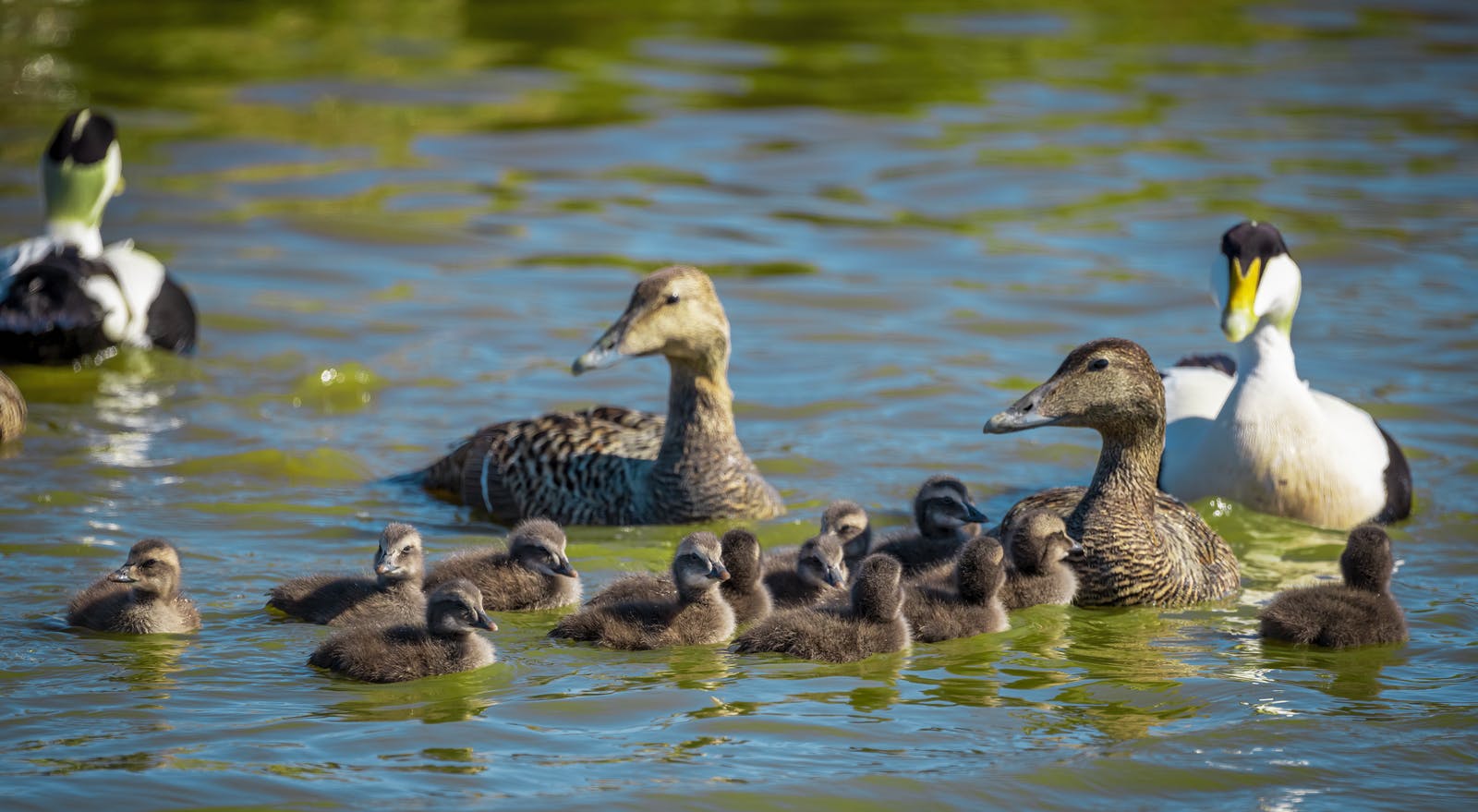
The Common Eider
The Icelandic Eider
The Common Eider (Somateria mollissima borealis) is a large sea duck of the Merginae family. The Eider is one of few Anatidae that occupies the marine environment all year round and thus shares many characteristics with seabirds rather than ducks. For instance, Eiders have salt glands like Alcids and gulls to excrete salt when drinking from the sea. There are 5-6 sub-species of Eiders in the world, but the Icelandic Eider is also found in North Canada, Greenland, Svalbard and Franz Josephs Island. It is estimated that the Icelandic Eider population is about 250 thousand breeding pairs or 970 thousand birds in autumn, and it is one of the largest bird populations in Iceland.
Embark on a captivating journey to unravel the enchanting secrets of Icelandic nature and wildlife by immersing yourself in the rich offerings of the Perlan Museum in Reykjavík. Here, you will find interactive exhibits that invite you to delve deeply into every facet of Iceland's awe-inspiring wonders. This unique and immersive experience, carefully curated for visitors of all ages, consolidates Iceland's diverse beauty and ecological richness into a single, remarkable destination at the Perlan Museum. Learn more about Icelandic nature and wildlife here.
Seasonal Bonding and Feeding Habits of Eiders
Most Eiders pair during fall or early winter. The male protects his female companion from harassment by other male birds so she has time to feed and build up energy reserves for the upcoming nesting period. Eiders feed on a large variety of benthic invertebrates, but mussels, small snails and clams, and chitons are the favourite prey around Iceland. They also consume crabs, sea urchins, starfish, small fish, and fish eggs. Eiders feed mostly at 2-5 m. depths, but they can dive at least 42 m.
Female Eiders and Nesting

Female Eiders increase their body mass by about 20% prior to nesting and are thus well-fit when they start egg-laying in May or June. They are going to need the extra energy as the female incubates alone 3-6 eggs for 24-26 days and does not feed during this period. It is estimated that the Eider does not leave the nest 90-97% of the total incubation time and loses about 25-45% of her body weight. Many Eiders can´t meet these extreme energy demands and abandon their nests in poor physical condition.
Eider Ducklings' Early Life

When Eider ducklings have fledged, they stay in the nest with the mother for 24 hours, but then they head out to sea. The ducklings feed mostly on small crustaceans (Gammarus sp.) and small snails for the first weeks. The mother Eider often leaves her ducklings after fledging, and other non-breeding Eiders called aunts attend the brood. In contrast, the mother feeds herself to compensate for her energy loss during incubation. Aunts often combine many broods, which are then called creches and consist of as many as 15-100 ducklings, along with a few aunts to protect them.
Eiders become mature at 3-5 years old and return to their fledging area to nest. The female controls the nesting site, so males often follow the female long distances to her brooding area. The eidernest is a remarkable phenomenon. Shortly before egg laying, female Eider starts to lose down from her belly area, which she collects and uses as insulation in her nest. The eiderdown has an exceptional insulation ability and keeps nest temperature stable during extremes in the arctic environment.
Eiderdown Harvesting in Iceland: A Sustainable Tradition

People learned early to love eiderdown and started down-collecting from the nests to make warm duvets, sleeping bags and clothes. Iceland is the leading country in eiderdown production, as about 80% of all eiderdowns in the world are originally from Icelandic eider nests. Unlike popular opinion, the downcollection does not have a negative impact on Eiders. Eiderfarmers insulate the nest with hay as they collect the down and care for each Eider as if it were their own pet. The Common Eider is, without a doubt, the most valuable bird of Iceland and one of the best protected.
Five Warm Facts about Eiders and Down Collecting
- Icelanders have collected down for centuries. The first law against hunting eiders is from the year 1786, but all hunting was forbidden from the year 1847.
- Wild eiders can become pretty old. A marked Icelandic eider was seen incubating her eggs in her late twenties.
- Eider farmers insert dry hay as insulation in the nest when they remove the down. The downcollection does not have a negative impact on the breeding bird.
- Eider ducklings only stay in the nest for 24 hours after fledging, and then they head out to sea and start feeding. Often, non-breeding eiders join the ducklings at sea and protect them from predators. Those „aunts'' lead the ducklings to good feeding sites.
- Icelanders collect, clean and sell about 80% of all eiderdown in the world!
Popular articles

Reykjanes Volcanoes Overview
Enjoy a complete overview of the Reykjanes Volcanoes from 2021-2024. Learn about its geology, recent activity, and visitor tips for a safe, memorable experience.

Reykjanes Peninsula Volcanoes: Sundhnúksgígar Eruptions
The anticipated volcano has erupted in the Reykjanes Peninsula, the site is being called Sundhnúkagígar. See the historic insights on the seismic activity and volcanic eruptions.

Earthquakes in Iceland
Earthquakes in Iceland are a fact of life. Each year, hundreds of small tremors shake the earth, a reminder of the country’s position on a tectonic plate boundary.

Volcano Museums and Exhibitions in Iceland
If you don't manage to visit an actively erupting volcano in Iceland - Experience its force at one of these excellent volcano museums and exhibitions in Iceland.

Top 10 Places To See the Northern Lights in Iceland
You can see the northern lights across the country, but some spots are more suitable than others. Find the best place to see the northern lights in Iceland.

Ice Caves From Reykjavik
Travel beyond the capital for a closer look at an ice cave under one of Iceland’s glaciers. If you can’t spare the time, experience Perlan’s ice cave in Reykjavik.